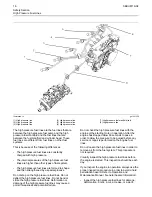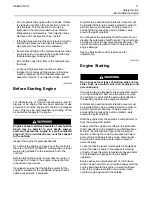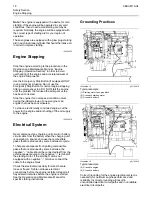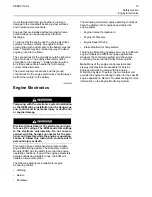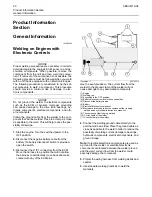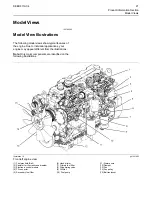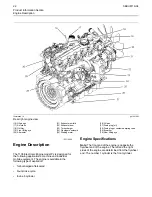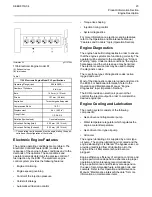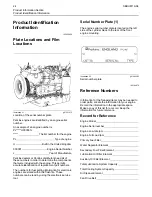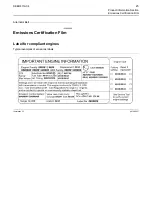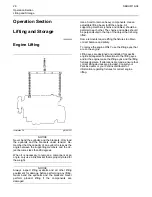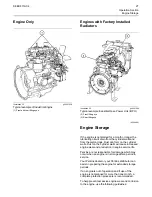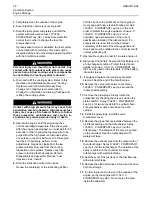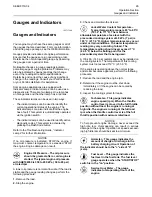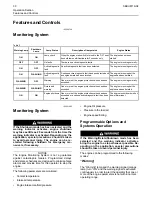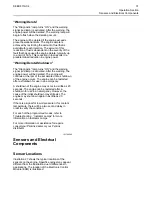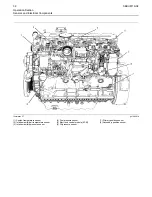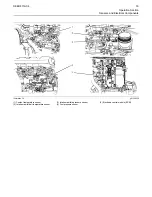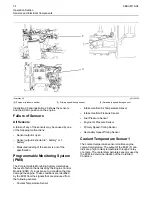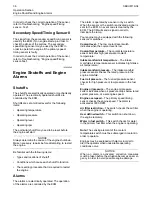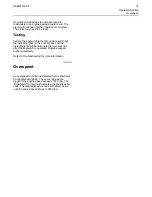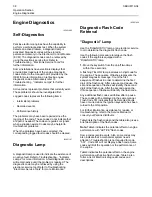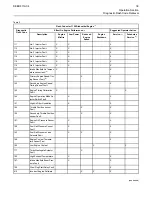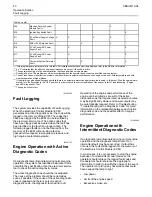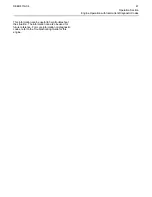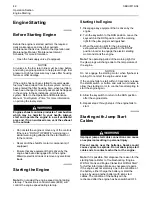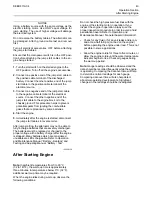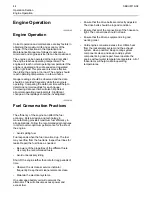
Gauges and Indicators
i02717240
Gauges
and
Indicators
Your
engine
may
not
have
the
same
gauges
or
all
of
the
gauges
that
are
described.
For
more
information
about
the
gauge
package,
see
the
OEM
information.
Gauges
provide
indications
of
engine
performance.
Ensure
that
the
gauges
are
in
good
working
order.
Determine
the
normal
operating
range
by
observing
the
gauges
over
a
period
of
time.
Noticeable
changes
in
gauge
readings
indicate
potential
gauge
or
engine
problems.
Problems
may
also
be
indicated
by
gauge
readings
that
change
even
if
the
readings
are
within
specifications.
Determine
and
correct
the
cause
of
any
significant
change
in
the
readings.
Consult
your
Perkins
dealer
or
your
Perkins
distributor
for
assistance.
Some
engine
applications
are
equipped
with
Indicator
Lamps.
Indicator
lamps
can
be
used
as
a
diagnostic
aid.
There
are
two
lamps.
One
lamp
has
an
orange
lens
and
the
other
lamp
has
a
red
lens.
These
indicator
lamps
can
be
used
in
two
ways:
• The indicator lamps can be used to identify the
current operational status of the engine. The
indicator lamps can also indicate that the engine
has a fault. This system is automatically operated
via the ignition switch.
• The indicator lamps can be used to identify active
diagnostic codes. This system is activated by
pressing the Flash Code button.
Refer to the Troubleshooting Guide, “Indicator
Lamps” for further information.
NOTICE
If no oil pressure is indicated, STOP the engine. If
maximum coolant temperature is exceeded, STOP
the engine. Engine damage can result.
Engine Oil Pressure – The oil pressure
should be greatest after a cold engine is
started. The typical engine oil pressure
with SAE10W40 is 350 to 450 kPa ( 50 to 65 psi)
at rated rpm.
A lower oil pressure is normal at low idle. If the load is
stable and the gauge reading changes, perform the
following procedure:
1.
Remove the load.
2.
Stop the engine.
3.
Check and maintain the oil level.
Jacket Water Coolant Temperature –
Typical temperature range is 83° to 95°C
(181.4° to 171°F). The maximum
allowable temperature at sea level with the
pressurized cooling system at 48 kPa (7 psi) is
103 °C (217.4 °F). Higher temperatures may occur
under certain conditions. The water temperature
reading may vary according to load. The
temperature reading should never exceed 7 °C
(44.6 °F) below the boiling point for the
pressurized system that is being used.
A 100 kPa (14.5 psi) radiator cap may be installed on
the cooling system. The temperature of this cooling
system must not exceed 112 °C (233.6 °F).
If the engine is operating above the normal range
and steam becomes apparent, perform the following
procedure:
1.
Reduce the load and the engine rpm.
2.
Determine if the engine must be shut down
immediately or if the engine can be cooled by
reducing the load.
3.
Inspect the cooling system for leaks.
Tachometer – This gauge indicates
engine speed (rpm). When the throttle
control lever is moved to the full throttle
position without load, the engine is running at
high idle. The engine is running at the full load
rpm when the throttle control lever is at the full
throttle position with maximum rated load.
NOTICE
To help prevent engine damage, never exceed the
high idle rpm. Overspeeding can result in serious
damage to the engine. Operation at speeds exceed-
ing high idle rpm should be kept to a minimum.
Ammeter – This gauge indicates the
amount of charge or discharge in the
battery charging circuit. Operation of
the indicator should be to the
““
+
””
side of
““
0
””
(zero).
Fuel Level – This gauge indicates the
fuel level in the fuel tank. The fuel level
gauge operates when the
““
START/STOP
””
switch is in the
““
on
””
position.
Service Hour Meter – The gauge
indicates total operating hours of the
engine.
SEBU8119-04
29


